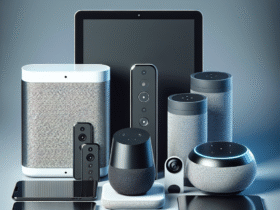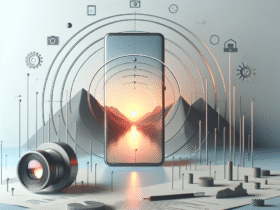Complete Phone Buying Guide: How to Choose the Perfect Smartphone for Your Needs
Choosing the right smartphone has become increasingly complex as manufacturers offer dozens of models across various price points, each with unique features and capabilities. With phones serving as our primary communication device, camera, entertainment center, and productivity tool, making the right choice impacts daily life for years to come. This comprehensive guide cuts through marketing hype to focus on fundamental principles that help you identify the perfect smartphone for your specific needs, budget, and lifestyle.
Understanding Your Smartphone Needs
Defining Your Primary Use Cases
Before examining specifications and features, it’s essential to honestly assess how you use your smartphone most frequently. This self-assessment guides every subsequent decision in the buying process.
Communication and Basic Use:
- Calling, texting, and basic app usage
- Social media browsing and light photo sharing
- Email and calendar management
- GPS navigation and ride-sharing apps
- Banking and payment applications
Content Creation and Photography:
- Frequent photo and video capture
- Social media content creation
- Professional or semi-professional photography
- Video calls and conferences
- Live streaming and content sharing
Entertainment and Media Consumption:
- Video streaming and movie watching
- Mobile gaming and interactive entertainment
- Music streaming and podcast listening
- E-book reading and digital magazines
- Social media browsing and engagement
Professional and Productivity:
- Email management and document editing
- Video conferencing and remote work
- Cloud file access and collaboration
- Project management and scheduling
- Travel booking and expense management
Lifestyle and Usage Pattern Assessment
Your daily routine and lifestyle significantly impact which phone features matter most for long-term satisfaction.
Usage Intensity Levels:
- Light Users (1-3 hours daily): Basic functionality and long battery life priority
- Moderate Users (3-6 hours daily): Balanced performance and feature set
- Heavy Users (6+ hours daily): Premium performance and advanced features essential
- Professional Users: Reliability, security, and productivity features critical
Essential Smartphone Components Explained
Display Technology and Size
The display is your primary interface with the phone, affecting everything from readability to battery life and overall user experience.
Screen Size Considerations:
- Compact (5.4-6.1 inches): One-handed use, pocket-friendly, better for smaller hands
- Standard (6.1-6.5 inches): Balanced usability for most users
- Large (6.5-6.8 inches): Better for media consumption, gaming, productivity
- Extra Large (6.8+ inches): Maximum screen real estate, may require two-handed use
Display Technology Types:
- LCD (IPS): Accurate colors, lower cost, adequate brightness
- OLED: Perfect blacks, vibrant colors, better contrast, more expensive
- AMOLED: Samsung’s OLED variant with enhanced brightness and efficiency
- Refresh Rate: 60Hz standard, 90-120Hz for smoother scrolling and gaming
Display Quality Factors:
- Resolution: Higher resolution provides sharper text and images
- Brightness: Important for outdoor visibility and HDR content
- Color Accuracy: Crucial for photography and professional work
- Eye Strain: Blue light filtering and adaptive brightness features
Performance and Processing Power
The processor (chipset) determines how smoothly your phone operates, especially during multitasking and demanding applications.
Performance Tiers:
- Budget Processors: Adequate for basic tasks, may struggle with intensive apps
- Mid-Range Processors: Smooth performance for most users and moderate gaming
- Flagship Processors: Excellent performance for all tasks, future-proofing
- Gaming-Focused: Specialized optimization for mobile gaming and graphics
Memory and Storage:
- RAM (4-16GB): More RAM enables better multitasking and app switching
- Storage (64GB-1TB): Consider your photo, video, and app storage needs
- Expandable Storage: MicroSD slot availability for additional storage
- Cloud Integration: Automatic backup and cloud storage options
Battery Life and Charging
Battery performance directly impacts daily usability and long-term satisfaction with your smartphone choice.
Battery Capacity Guidelines:
- 3000-3500mAh: Adequate for light to moderate usage
- 3500-4500mAh: Good all-day battery life for most users
- 4500mAh+: Excellent battery life for heavy users
- Efficiency Factors: Processor efficiency and display technology affect actual battery life
Charging Technology:
- Wired Charging: 18W basic, 25W good, 45W+ fast charging
- Wireless Charging: Convenient but slower than wired options
- Reverse Charging: Ability to charge other devices wirelessly
- Battery Health: Long-term battery degradation and replacement options
Operating System Ecosystem Choice
iOS vs Android: Fundamental Differences
The operating system choice affects not just the user interface, but also app availability, security, customization options, and ecosystem integration.
iOS (iPhone) Advantages:
- Ecosystem Integration: Seamless connection with Mac, iPad, Apple Watch
- Software Updates: 5-7 years of iOS updates for most devices
- App Quality: Consistent app design and performance standards
- Privacy Focus: Strong privacy controls and data protection
- Simplicity: Intuitive interface with minimal learning curve
- Resale Value: iPhones retain value better than Android alternatives
iOS Limitations:
- Limited customization options
- Higher price points across all models
- Restricted file management and sideloading
- Dependency on Apple’s ecosystem for optimal experience
Android Advantages:
- Customization: Extensive personalization options and widgets
- Hardware Variety: Wide range of manufacturers, styles, and price points
- File Management: True file system access and external storage
- Google Integration: Deep integration with Google services
- Innovation: First to market with many new features
- Price Range: Options from budget to premium across many brands
Android Considerations:
- Variable update schedules depending on manufacturer
- Potential for bloatware and manufacturer modifications
- Security updates may lag on some devices
- App quality can vary more than iOS
Manufacturer Differences Within Android
Android manufacturers add their own interfaces and features, creating distinct user experiences even within the same operating system.
Stock Android Experience:
- Google Pixel: Pure Android with fastest updates and exclusive features
- Benefits: Clean interface, timely updates, Google AI integration
- Ideal For: Users wanting the “pure” Android experience
Samsung One UI:
- Features: Extensive customization, Samsung ecosystem integration
- Benefits: Rich feature set, excellent hardware integration
- Considerations: Can feel overwhelming for simple usage preferences
Other Manufacturer Approaches:
- OnePlus OxygenOS: Near-stock Android with performance optimizations
- Xiaomi MIUI: iOS-inspired design with extensive customization
- Nothing OS: Minimalist design with unique visual elements
Camera Systems: Beyond Megapixels
Understanding Camera Specifications
Camera quality depends on much more than megapixel count, with sensor size, lens quality, and image processing playing crucial roles.
Key Camera Components:
- Sensor Size: Larger sensors capture more light for better image quality
- Aperture (f-number): Lower numbers allow more light for better low-light performance
- Optical Image Stabilization: Reduces blur from hand movement
- Lens Quality: High-quality glass and coatings improve sharpness and color
Multi-Camera System Benefits:
- Main Camera: Primary photography with largest sensor
- Ultra-Wide: Landscape and group photos with wider field of view
- Telephoto: Optical zoom for distant subjects without quality loss
- Macro: Close-up photography of small subjects
- Depth Sensor: Assists with portrait mode background blur
Computational Photography:
- HDR Processing: Combines multiple exposures for balanced lighting
- Night Mode: AI-enhanced low-light photography
- Portrait Mode: Artificial background blur and lighting effects
- Scene Recognition: Automatic optimization for different subjects
Camera Quality Assessment
Evaluating camera performance requires looking beyond specifications to real-world image quality and user experience.
Image Quality Factors:
- Daylight Performance: Color accuracy, detail, and dynamic range
- Low-Light Capability: Noise reduction and detail preservation
- Video Quality: Stabilization, resolution, and audio recording
- Consistency: Reliable performance across different shooting conditions
User Experience Elements:
- Camera App Interface: Ease of use and feature accessibility
- Autofocus Speed: Quick and accurate focus acquisition
- Shutter Lag: Minimal delay between pressing shutter and capture
- Processing Speed: Time to save and process images
Build Quality and Design Considerations
Materials and Construction
The physical construction of your phone affects durability, feel, and long-term satisfaction with daily use.
Premium Materials:
- Aluminum Frame: Lightweight, durable, premium feel
- Stainless Steel: Extremely durable, heavier, premium appearance
- Glass Back: Premium appearance, wireless charging capability, fragile
- Ceramic: Scratch-resistant, premium feel, expensive to manufacture
Practical Construction:
- Plastic Frame: Lightweight, affordable, adequate durability
- Polycarbonate Back: Durable, lighter than glass, less premium feel
- Fabric or Leather: Unique texture, good grip, requires careful maintenance
Durability Features:
- Water Resistance: IP67/IP68 ratings for protection against water damage
- Drop Protection: Reinforced corners and shock-absorbing materials
- Screen Protection: Gorilla Glass or similar scratch-resistant coatings
- Port Protection: Dust and moisture sealing for charging ports
Ergonomics and Daily Usability
How a phone feels in your hand and pocket significantly impacts satisfaction during extended daily use.
Physical Comfort Factors:
- Weight Distribution: Balanced feel that doesn’t strain wrist during use
- Thickness: Slim profile for comfortable pocket carry
- Edge Design: Rounded or flat edges affecting grip comfort
- Button Placement: Accessible volume and power buttons
One-Handed Use Considerations:
- Reachability of top screen areas
- Thumb navigation comfort
- Secure grip without accidental touches
- Software features supporting one-handed operation
Budget Planning and Value Assessment
Price Tier Understanding
Smartphones fall into distinct price categories, each offering different value propositions and compromises.
Budget Tier ($200-400):
- Strengths: Basic functionality, adequate performance, long battery life
- Compromises: Camera quality, build materials, software update longevity
- Best For: Light users, backup phones, cost-conscious buyers
- Update Cycle: 2-3 years of software support typical
Mid-Range Tier ($400-800):
- Strengths: Good cameras, solid performance, modern features
- Compromises: Premium materials, cutting-edge features, top-tier performance
- Best For: Most users seeking balance of features and value
- Update Cycle: 3-4 years of software support typical
Premium Tier ($800-1200):
- Strengths: Excellent cameras, premium materials, flagship performance
- Compromises: Diminishing returns on investment, high repair costs
- Best For: Power users, photography enthusiasts, status-conscious buyers
- Update Cycle: 4-5 years of software support typical
Ultra-Premium Tier ($1200+):
- Strengths: Cutting-edge technology, maximum features, best performance
- Compromises: Very high cost, marginal improvements over premium tier
- Best For: Enthusiasts, professionals, early adopters
- Update Cycle: 5-7 years of software support typical
Total Cost of Ownership
The purchase price represents only part of the total cost of smartphone ownership over its useful life.
Ongoing Costs:
- Service Plan: Monthly carrier costs for voice, data, and services
- Insurance: Device protection against loss, theft, or damage
- Accessories: Cases, screen protectors, chargers, and other additions
- Repairs: Screen replacements, battery service, and other maintenance
Value Retention Factors:
- Brand Reputation: Apple and Samsung typically retain value best
- Model Popularity: Popular models have better resale markets
- Condition Maintenance: Cases and screen protectors preserve value
- Software Support: Longer update support maintains relevance
Connectivity and Network Considerations
5G Network Compatibility
Fifth-generation cellular networks offer faster speeds and lower latency, though availability and benefits vary by location and carrier.
5G Benefits:
- Speed: Potentially 10-100x faster than 4G LTE
- Latency: Reduced delay for real-time applications
- Capacity: Better performance in crowded areas
- Future-Proofing: Network technology for the next decade
5G Considerations:
- Coverage: Limited availability in rural and some urban areas
- Battery Impact: 5G modems can drain battery faster
- Cost: May require upgraded service plans
- Real-World Benefits: Advantages may be minimal for typical usage
Carrier Compatibility:
- Verify phone supports your carrier’s specific 5G bands
- Consider unlocked vs. carrier-locked devices
- Check for carrier-specific features and restrictions
- Evaluate international roaming capabilities if needed
Other Connectivity Features
Modern smartphones include various connectivity options that may be important for your specific use cases.
Wireless Connectivity:
- Wi-Fi Standards: Wi-Fi 6 for faster home network speeds
- Bluetooth Version: Bluetooth 5.0+ for better wireless audio
- NFC: Near-field communication for mobile payments
- Wireless Charging: Qi standard compatibility
Physical Connections:
- USB-C vs Lightning: Charging and data transfer standards
- Headphone Jack: Increasingly rare but important for some users
- Expandable Storage: MicroSD card slot availability
- SIM Card Options: Single, dual, or eSIM support
Security and Privacy Features
Biometric Authentication
Modern smartphones offer multiple secure authentication methods that balance security with convenience.
Fingerprint Recognition:
- Physical Sensors: Fast, reliable, works in most conditions
- In-Display Sensors: Convenient placement, may be slower
- Side-Mounted: Good balance of speed and convenience
- Limitations: Wet fingers, gloves, or cuts may prevent use
Face Recognition:
- 3D Face Scanning: Highly secure using depth sensors
- 2D Face Recognition: Convenient but less secure
- Benefits: Hands-free unlocking, works with gloves
- Limitations: Masks, lighting conditions, or glasses may interfere
Additional Security Features:
- Secure Elements: Hardware-based security for payments
- Knox/Secure Folder: Isolated secure environments
- Regular Security Updates: Protection against emerging threats
- App Permissions: Granular control over app access to data
Privacy Considerations
Different manufacturers and operating systems handle user privacy with varying approaches and transparency levels.
Data Collection Practices:
- Understanding what data is collected and how it’s used
- Opt-out options for advertising and analytics
- Default privacy settings and recommended adjustments
- Third-party app privacy policies and permissions
Making the Final Decision
Prioritization Framework
With numerous factors to consider, a systematic approach helps identify the phone that best matches your specific needs and preferences.
Essential Requirements (Non-Negotiable):
- Budget constraints and maximum acceptable price
- Operating system preference (iOS vs Android)
- Minimum performance requirements for your usage
- Carrier compatibility and network support
Important Features (Highly Desired):
- Camera quality requirements for your photography needs
- Battery life expectations based on usage patterns
- Display size and quality preferences
- Build quality and durability requirements
Nice-to-Have Features (Bonus Benefits):
- Premium materials and design aesthetics
- Cutting-edge features and latest technology
- Extensive customization options
- Brand preferences and ecosystem integration
Testing and Research Strategy
Before making a final purchase decision, hands-on experience and thorough research help ensure long-term satisfaction.
Hands-On Evaluation:
- Store Visits: Physical handling to assess size, weight, and build quality
- Display Quality: Screen brightness, color accuracy, and viewing angles
- Camera Testing: Sample photos in store lighting conditions
- Interface Navigation: Operating system ease of use and responsiveness
Research Resources:
- Professional Reviews: Detailed technical analysis and real-world testing
- User Reviews: Long-term ownership experiences and issues
- Camera Samples: Real-world photo and video examples
- Software Updates: Manufacturer track record for ongoing support
Timing Your Purchase
Release Cycle Awareness
Understanding smartphone release patterns helps optimize value and avoid buyer’s remorse from outdated purchases.
Annual Release Patterns:
- Apple: September releases with predictable timing
- Samsung: February (Galaxy S) and August (Galaxy Note/Fold)
- Google: October releases for Pixel series
- Other Manufacturers: Various timing throughout the year
Optimal Purchase Timing:
- New Release: Latest features but highest prices
- 6 Months Later: Often 20-30% price reduction
- Previous Generation: Excellent value when new models launch
- End of Cycle: Deep discounts but limited software support remaining
Upgrade Decision Framework
Determining when to upgrade requires balancing your current phone’s limitations against the benefits and costs of newer models.
Upgrade Indicators:
- Performance Issues: Slow operation, frequent crashes, or freezing
- Battery Degradation: Significantly reduced battery life
- Software Support End: No more security updates
- Physical Damage: Cracked screens or non-functional features
- Changing Needs: New use cases requiring different capabilities
Upgrade Timing Strategies:
- Conservative (4-5 years): Maximum value extraction, some feature lag
- Balanced (3-4 years): Good performance throughout ownership
- Early Adopter (1-2 years): Latest features, higher total cost
- Need-Based: Upgrade when current phone no longer meets requirements
Conclusion: Your Perfect Phone Awaits
Choosing the perfect smartphone requires balancing numerous factors against your specific needs, preferences, and budget constraints. While the abundance of options can seem overwhelming, focusing on your primary use cases and prioritizing features that matter most to your daily experience simplifies the decision-making process.
Remember that the “best” phone is highly individual—a device that excels for a photography enthusiast may be overkill for someone who primarily uses their phone for communication and basic tasks. Similarly, a budget-conscious buyer may find exceptional value in a mid-range device that offers 90% of flagship performance at half the price.
The smartphone market continues evolving rapidly, with new technologies and features emerging regularly. However, the fundamental principles outlined in this guide—understanding your needs, evaluating key components, considering total cost of ownership, and timing your purchase strategically—remain constant regardless of specific models or current market conditions.
Take time to honestly assess your usage patterns, test devices hands-on when possible, and remember that any modern smartphone will likely serve you well for several years when chosen thoughtfully. The perfect phone for you is the one that enhances your daily life without straining your budget or overwhelming you with unnecessary complexity.
Most importantly, don’t let the fear of making the “wrong” choice prevent you from upgrading when your current device no longer meets your needs. The smartphone market is mature enough that even budget options provide excellent fundamental functionality, while premium devices offer genuinely useful advanced features for those who can benefit from them.






Leave a Reply